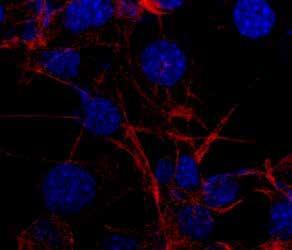
Cells in vivo are arranged in a complex micro-environment consisting mainly of extracellular matrix (ECM) and soluble factors. Researchers have tried to replicate the ECM by utilising artificially engineered matrices to provide support for cell growth. Our group has developed semi-synthetic matrices consists of polyethylene glycol diacrylate and gelatin methacrylate which will be used to study how cells respond to different micro-environment. The main advantage of these hydrogels is that we can control the stiffness and degradability by varying the composition of the respective polymers.These matrices were characterised for morphology, pore size, stiffness, degradation and swelling ratio. Further, we wanted to study the cellular fate processes on these semi-synthetic matrices. We chose MDA-MB 231 breast cancer cell line as a model system for our studies. We have seen differences between cells cultured on traditional 2D petri plates and those cultured on the surface of or embedded within these hydrogels. We have looked at various aspects such as morphology and migration of cells in these matrices, their gene expression profile related to epithelial to mesenchymal transition, their matrix metallo proteinases (MMPs) secretion profile and cytoskeletal organisation. Our results suggest that cellular phenomenon is influenced not just by matrix properties such as stiffness, degradability or cell adhesivity but also depends upon the context in which these are presented to cells. This work has implications in understanding processes involved in cell invasion, cancer metastasis which may subsequently help in developing platforms for drug screening applications.
Prof. Prakriti Tayalia
